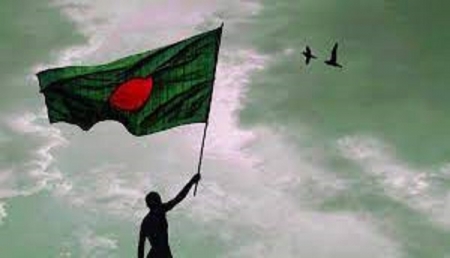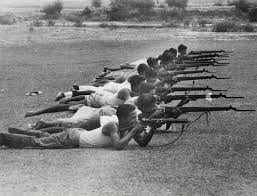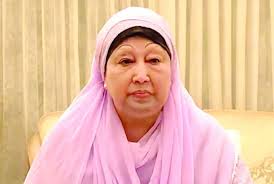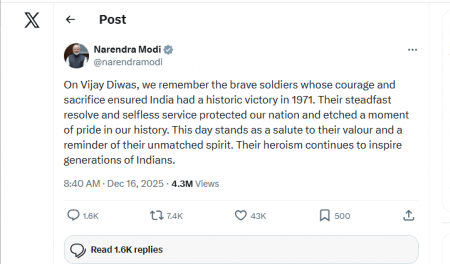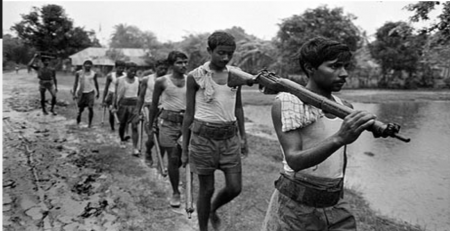যুদ্ধ শিশুদের নিয়ে লেখা মোস্তফা চৌধুরীর বইয়ের ওপর আমার করা রিভিউ প্রকাশিত হয়েছে ডেইলি স্টার পত্রিকায়।
দ্রষ্টব্য: আমি কিন্তু পেশাদার বুক রিভিউয়ার না, অ্যামেচার।
Finding home halfway across the world
Author: Mustafa Chowdhury || Publisher: Academic Press and Publishers Library (APPL), February 2016
http://epaper.thedailystar.net/index.php?opt=view&page=12&date=2016-03-07
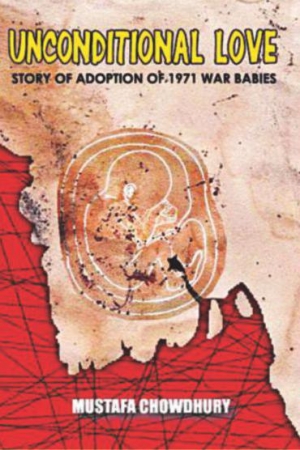
In this book author Mustafa Chowdhury has reconstructed the story of the first contingent of 15 war babies who were sent off to Canada in July 1972 for adoption and outlined the outcome of their adoption in Canadian homes after 44 years – something that no one in Canada or Bangladesh has addressed ever before. His research is based on an examination of primary documents pertaining to adoption formalities pieced together, analysed and interpreted gathered both in Canada, where the author lives, and in Bangladesh where he traveled to. The varying tones of exasperation are noticeable in the endless questions that went through Chowdhury's mind: Where are the mothers? Where are their babies whom they had abandoned? What happened to those war babies who made it to Canada through adoption? The two most vital questions that the author kept asking himself persistently throughout his research were: What is the evidence for this? What is the documentation for this?
Having followed up on the first 15 war babies destined for adoption in Canadian homes, Chowdhury explored the well-being of these children who are now in their early forties; and their personal views of their own notion of their identity in Canada where they grew up. As the 592-page book progresses from one chapter to the next, readers will learn about the story of the war babies' journey from Bangladesh to Canadian homes; and their life in Canada that illustrates human relationships which developed and matured into deeply satisfying experiences for both the adopters and the adoptees with fascinating anecdotes centering the lives of the war babies in their country of adoption.
Through his Preface and Introduction, Chowdhury familiarizes his readers with how the war babies were looked at by Bangladeshis back in 1972. The discomfort and disgust that tended to embroil the issue were that, despite peoples' innate protective feelings towards the newborn infants, the war babies were viewed by people with derision. Chapter One sets the historical context, giving a short account of the War of Liberation in terms of the military atrocities and the on-going repression of the Bengali citizenry which included soldiers using sexual violence as a means of control. Chapter Two is an outline of the state of orphanages in Canada and Bangladesh and laws pertaining to adoption and guardianship. He also touches on the traditions of taking care of orphans by the extended family members without going through a process of formal adoption. He described the Bangladesh Abandoned Children (Special Provisions) Order, 1972 that was enacted to legalise adoption.
In Chapter Three Chowdhury describes the Bangladesh Project conceived by the Families For Children (FFC) and welcomed by both the governments of Bangladesh and Canada. It outlines how, having fought the intransigent opposition or resistance, especially from certain officials in the government of Ontario, the adoptive parents worked through the strangling red tape of provincial and federal governments in Canada and the government of Bangladesh. In Chapter Four he describes the war babies' odyssey from Bangladesh to Canada, their arrival, their joyous reunion and their formal adoption in Canada. It outlines behind-the-scenes work, logistics and coordination with respect to the exact departure and arrival of the first batch of 15 war babies from Bangladesh to Canada, via New Delhi and New York.
In Chapter Five Chowdhury outlines how, for the resolute adoptive parents (who were nor infertile by any means) it was not a matter of quality of life but the opportunity to life itself. The miracle of finding a few Bangladeshi war babies safe in their bosom without a mother and raising them triumphantly make the ordinary Canadian couples extra-ordinary.
Being surrounded by diverse multiracial family members in a strong, supportive and loving environment from childhood to adulthood, all of the war babies had followed a similar developmental trajectory of self-awareness that had helped them grow up with human dignity they deserve, something for which today they are counted as citizens of the world.
In Chapter Six we get to read the testimonies of the adoptive parents – joys and pains of parenting. Parents frankly talk about their experiences of raising children of diverse backgrounds and recalled many anecdotes that they have treasured in their mind.
Again in Chapter Seven, the testimonies of the war babies reveal how these infants born in extremely difficult conditions were able to develop and adjust socially and psychologically under a completely different environment.
It's an important chapter in that it touches on a volley of questions: Is there, in the minds of the adoptees, a feeling of loss from their country of birth? Or, while growing up in a multiracial family, did the adoptees fear a risk of losing a sense of how they present themselves to the world? Such questions made Chowdhury wonder what kinds of questions they might have in their minds as to who they were and from whence they came, including not only their race but also the politically unsettled question with regard to their Pakistani/Bangladeshi origin. For all practical purposes, the war babies, whose actual lives began in Canada, needed to know about their realistic beginnings (culture and ethnicity) in order to have a sense of who they were and to feel connected to the world both genetically and environmentally. When very young they saw themselves as being different, at least look wise. As a result they were confronted with questions along the following lines: Who am I? Why was I adopted? Why was I not placed in Bangladesh? Why in Canada? Here Chowdhury explores the war babies' attachment to their country of birth and presented them through their own narratives.
Ryan Good, who grew up in Copetown, Ontario, says how confused he had been while he stayed in Bangladesh for a year when he was 27. He talked about two countries and two mothers - a Bengali mother who gave birth to his body and an adoptive mother who gave birth to his soul without any hesitation. “My name is Badol. I have two Mothers - one calls me Ryan, and the other calls me Badol. The one who calls me Ryan, I have known all my life. The one, who calls me Badol, I have never met. I was born in Bangladesh to the Mother who calls me Badol. Three weeks later, I was back in Canada to the Mother who calls me Ryan. A Pakistani soldier raped the Mother who calls me Badal. I am a war baby,” wrote Ryan calling a spade a spade.
Chowdhury found that they do not have, what might be considered, a “group identity” perhaps due to the fact that they grew up in different parts of the country under different social environments. Each family's notion of a “family” having “children of mixed backgrounds” had helped create a “bond” among family members that had overridden any kind of divisiveness or differences due to their sense of ethnicity.
Chowdhury noted that no one exhibited any feeling of confusion about one's own identity and self-image which are usually reflected in low self-esteem and often in the development of behavioural problems. They neither disassociated from other visible minorities nor rejected their skin colour. The adoptees simply formed an identity of their unique situation within the eclectic families in which they were raised. In that sense, they are much unlike many adoptees who have a devalued sense of self-esteem - not knowing who they were and having a low opinion of their own being placed in a state of “confused” identity. Certainly this was not the case with the present group of adoptees.
In Chapter Eight having summarized the findings, Chowdhury considers this incredible bringing-home-war-babies-initiative to be counted as a “success story” of a group of babies who were badly in need of care and protection. The author concludes with the statement that if one considers adoption as a means of providing a permanent relationship between the adopting parents and the person adopted, the adoption of the war babies stands out as an outstanding story that illustrates complete adjustment of the Bangladeshi war babies brought to Canadian homes.
Whether the war babies grew up in Canada or anywhere else in the world, at the heart of the core issue of adoption is the deeper understanding of adoption as a way of making a family by embracing them as one's own children, observes Chowdhury. With the unfolding of their life-story, there emerged an important point - that adoption begins as a lifelong, inter-generational journey that touches the children, their siblings and both biological and adoptive parents.
The present book is not only a fascinating read, but also a collection of testimonies that fills in a gap in the historical narrative of the War of Liberation of Bangladesh. Thus far, all we have heard about the war babies is through a mere citation in the history books dealing with the independence of Bangladesh. Chowdhury, for the first time, has painstakingly described the birth, abandonment and adoption of the war babies in general and the adoption of a number of such babies in Canada with the adoption outcome. No one to this day has attempted to fill in this gap in the historiography of the Bangladesh's War of Liberation. Viewed from this angle, the present book marks a new dimension in the historiography of the Bangladesh's War of Independence.
Since the new generation of Bangladeshis is desperately looking for authentic history to complete the gap in the historical narrative with reference to the story of the Bangladeshi war babies, this book would be a new addition to a subject that has not yet been addressed by the historical establishment. Judged from this angle, this book is likely to be the first reference book on the war babies of Bangladesh. It should be recommended for students across the country so that they may familiarize them with the hitherto unknown story of the war babies of Bangladesh.
The reviewer is the author of the book, "Sangbadikota: Offline Online"
সর্বশেষ এডিট : ১১ ই মার্চ, ২০১৬ রাত ১:৩১


 অনুগ্রহ করে অপেক্ষা করুন। ছবি আটো ইন্সার্ট হবে।
অনুগ্রহ করে অপেক্ষা করুন। ছবি আটো ইন্সার্ট হবে।




